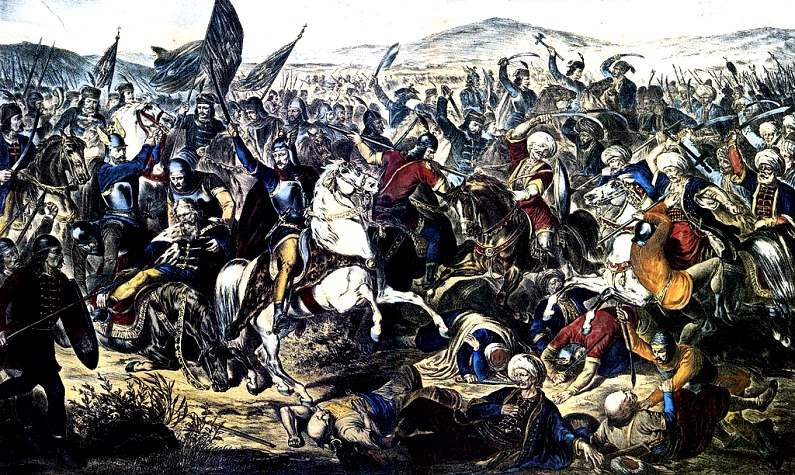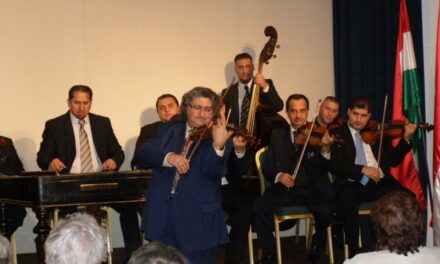" A nation that does not know its past does not understand its present, and cannot create its future!"
Europe needs Hungary... which has never let itself be defeated
Turkish world in Hungary
The territory that the Turks occupied and invaded from Hungary, which had been ruled by Hungarian kings for five centuries, is discussed in history as vassalage In 1541, after the capture of Buda, Sülejmán Nagy annexed this area in the middle of the Carpathian Basin - the area dominated by the fertile lowland agricultural areas and our large rivers - to the Ottoman Empire. In the year of Suleiman's ascension to the throne, he launched an attack on the western half of Europe, primarily Hungary. The defeat at Mohács in 1526 was not a fatal tragedy in itself, the disintegration of Hungary occurred after Mohács. It is true that the Turks began to cause enormous destruction, since two weeks after the Battle of Mohács, 20,000 fleeing Hungarians who could not cross the Danube were murdered near Marót (today Pusztamaró). In the months of September and October 1526, in the area of Pétervárad and Bács, between the Danube and the Tisza, about 500,000 Hungarians were killed by Szulejmán's soldiers. In addition to the loss of life, hundreds of villages became victims of the fire, the once fertile land became wasteland. However, the biggest trouble was caused by the civil wars that broke out between the Hungarian lords. Ferdinand Habsburg occupied the western part of the country, János Szapolyai the eastern territories of the Kingdom of Hungary.

Between the tragedy of Mohács and the occupation of Buda, in addition to the already mentioned Hungarian exterminations, several events worth mentioning took place. , there was an unsuccessful siege of Vienna in 1529 an attack on Kőszeg in 1532 The heroic defense of Miklós Jurisics and his 700 soldiers entered the bright pages of history because Kőszeg was a bastion of protection for Vienna and the West.
Peace of Varad 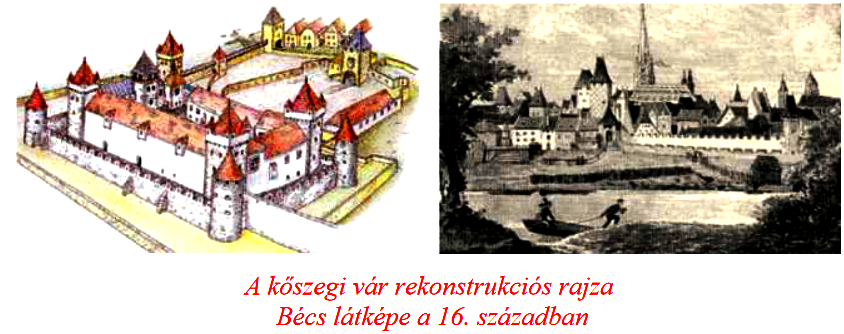 signed in 1538 should be mentioned , which was established between the two Christian kings (János I and Ferdinand I). The peace had to be kept secret from the Turks, given that the agreement was also an alliance against the Turks. The peace of Várad was partly the work of György Fráter, who many still consider a traitor. Friend György served the Hungarian cause and had a lion's share in the establishment of the Principality of Transylvania. After the death of King János Szapolyai, he supported his son, Zsigmond János. This also caused his tragic fate, when the emperor's assassins executed him in his Alvinci castle in 1551.
signed in 1538 should be mentioned , which was established between the two Christian kings (János I and Ferdinand I). The peace had to be kept secret from the Turks, given that the agreement was also an alliance against the Turks. The peace of Várad was partly the work of György Fráter, who many still consider a traitor. Friend György served the Hungarian cause and had a lion's share in the establishment of the Principality of Transylvania. After the death of King János Szapolyai, he supported his son, Zsigmond János. This also caused his tragic fate, when the emperor's assassins executed him in his Alvinci castle in 1551.
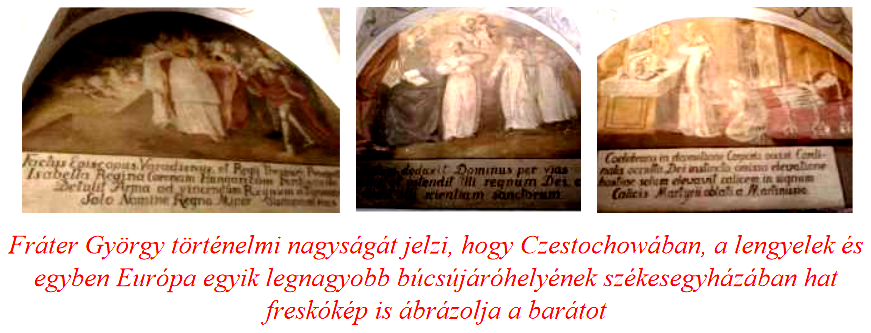 The essence of the Peace of Várad is the plan to unify the country, the flaw of which was that they also agreed that if King János did not
The essence of the Peace of Várad is the plan to unify the country, the flaw of which was that they also agreed that if King János did not
have a successor after his death, the Hungarian throne would pass to Ferdinand Habsburg. (Mátyás Hunyadi already made this mistake in 1463, when he made an agreement with his greatest opponent, Emperor Frederick III, that the Hungarian throne would pass to the Habsburgs after his death.)
The ink has not even dried on the paper, Vienna has already unleashed its predatory armies on Eastern Hungary.
However, what is even more indicative of the Habsburgs' lack of restraint and violation of contracts is that they betrayed János to the Turks because of the Peace of Varad. In such circumstances, there was little hope that our country would regain its former glory and greatness.
The formation and rapid expansion of the Turkish Subjugation was facilitated by the aforementioned internal disunity, Mohács and the subsequent Turkish devastations, as well as a number of other events. One is the self-destructive story of the peasant war led by Dózsa. In the process, the nobility, the commoners, the peasantry and artisans who worked the land, as well as many members of the churches (Roman Catholic, Protestant), from the high priests to the simple clergy, perished by the thousands, leaving the country defenseless.
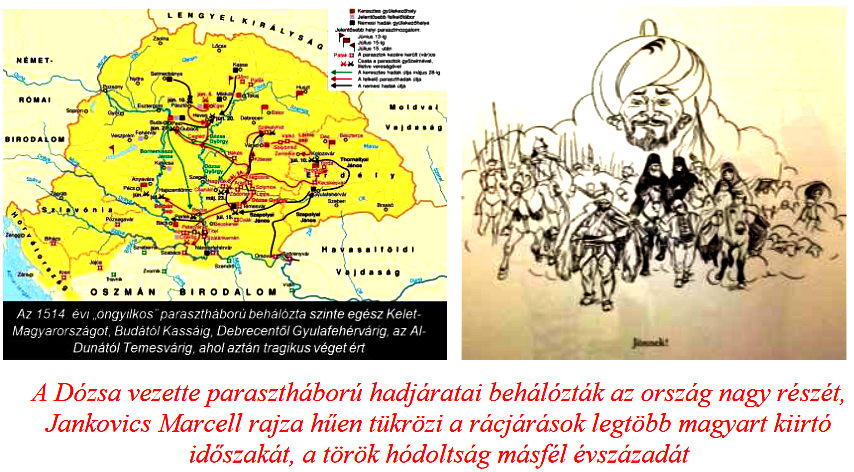 A less well-known secret of the success of the Turkish conquests is the effective contribution of the Ráci (who adopted the Serbian name only from the middle of the 19th century) in the service of the Porte. The raids began as early as 1268 and practically lasted until the Yugoslav war in the 1990s. (Nowadays it is not elegant to mention the centuries-old atrocities of the Serbs, because we are living in those rare years when we live in friendly and allied relations with the Serbs. Who knows how long?) It is also a historical fact that during the Anjou period between 1316-1359 and then 1492-1682 period, during the Rákóczi War of Independence 1703-1711 , the Rák always fought either on the side of the Turks or the Habsburgs, but always against us. A particularly cruel blood bath was organized 1848/1849 , during the war of independence, it is enough to mention the name of Szenttamás. The First World War broke out in hostile Serbia, followed by the Tito carnage of 1945-1946 However, let's stay in the period of the Turkish invasion, referring to the role of the grids.
A less well-known secret of the success of the Turkish conquests is the effective contribution of the Ráci (who adopted the Serbian name only from the middle of the 19th century) in the service of the Porte. The raids began as early as 1268 and practically lasted until the Yugoslav war in the 1990s. (Nowadays it is not elegant to mention the centuries-old atrocities of the Serbs, because we are living in those rare years when we live in friendly and allied relations with the Serbs. Who knows how long?) It is also a historical fact that during the Anjou period between 1316-1359 and then 1492-1682 period, during the Rákóczi War of Independence 1703-1711 , the Rák always fought either on the side of the Turks or the Habsburgs, but always against us. A particularly cruel blood bath was organized 1848/1849 , during the war of independence, it is enough to mention the name of Szenttamás. The First World War broke out in hostile Serbia, followed by the Tito carnage of 1945-1946 However, let's stay in the period of the Turkish invasion, referring to the role of the grids.
This role was nothing more than the occupation of territory, which is only possible - this is what wars have been about for thousands of years - if the inhabitants of the selected land are permanently driven away from it, enslaved, or destroyed. This is what happened to the Hungarians. After all, at the time of the Árpáds, the regions of Szerémség, Bács and Valkó, and other areas of southern Hungary, were the richest and most densely populated parts of the country. When the Mohács tragedy occurred, the Balkans were already completely under Serbian rule.

It is perhaps even less widely known that at the time of the subjugation, more than 50-60 percent of the Turkish army occupying Hungary
were soldiers and officials of Turkish origin disguised in Turkish uniforms. It is also a fact that one of the four official languages of the Ottoman Empire was Ra. The native language of Sülejmán Nagy himself was also the Rá. Given that his birth mother - although some sources refer to her as a Crimean Tatar - was the daughter of an Orthodox priest. The history of the raids cannot be avoided when discussing the Turkish Subjugation, because this centuries-long chapter perhaps caused more significant damage and loss of life to Hungary than the Turks themselves. (Just for the sake of order, let's mention that after the Turks disappeared, the Ráks changed uniforms and in the service of the Habsburgs continued the methodical extermination of the Hungarians and their territorial acquisition policy, all the way to Trianon.)
Vilajets and sandbags
First, after the capture of Buda, the Porte created the Buda vilayet . The success of Sülejmán's campaigns in Hungary was proven by the fact that the Buda vilayet, i.e. Beglerbegség (regentship), which existed between 1541-1686, was one of the largest and most important provinces of the Ottoman Empire. The Pasha of Buda was at the head, who also ruled over the pashas of the later vilayets (Temesvár /1552/, Győr /1594/, Egri /1596/, Kanizsa /1600/, Várad /1660/, érsekújvár /1663/). Buda was under the direct control of Istanbul. Most Buda pashas also held the vizier . At the time of Süleymán the Great, there were only six provinces, and half a century after his death there were already 51. This did not mean a comparable increase in territory, but a tightening of public administration and the division of the tasks of the Porte. Over time, during the decline of the empire, the number of provinces decreased.

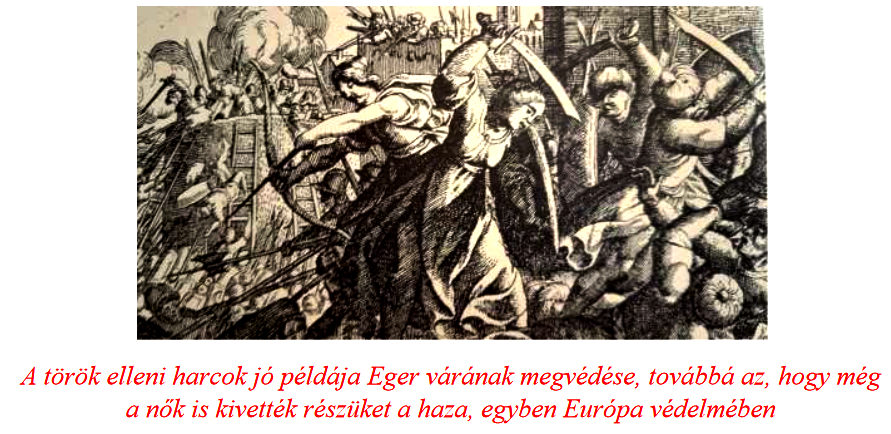
The vilayet was divided into several administrative areas, the so-called sanjaks , headed by the begs . The lower level of the territorial pyramid was occupied by kaza (district) and nahije The latter were headed by the aga , who still had great power. (It should be mentioned that the Christian villages had their own court and self-government, naturally subordinated to Turkish imperial interests. This was especially important from the point of view of taxation.)
Justice
In order to maintain the power it had acquired on several continents, the Turkish empire tried to bind the local population to itself by preserving their economic interests, religion, and traditions. This was also the case in Hungary. In addition to the previously mentioned genocides, intimidation, and abductions for slaves, in view of the fact that they needed labor, taxes, and the prevention of rebellions, they strove to preserve ancient customs, traditions, and religions. Sülejmán appointed the jurist István Werbőczy in order to harmonize Hungarian laws with the imperial legal system. The Turks had had enough of the continuous complaints of the Hungarians and the raising of their rights exercised since Saint Stephen - which Werbőczy persistently conveyed to the Pasha of Buda. Werbőczy was murdered, and no one was appointed to this position again.
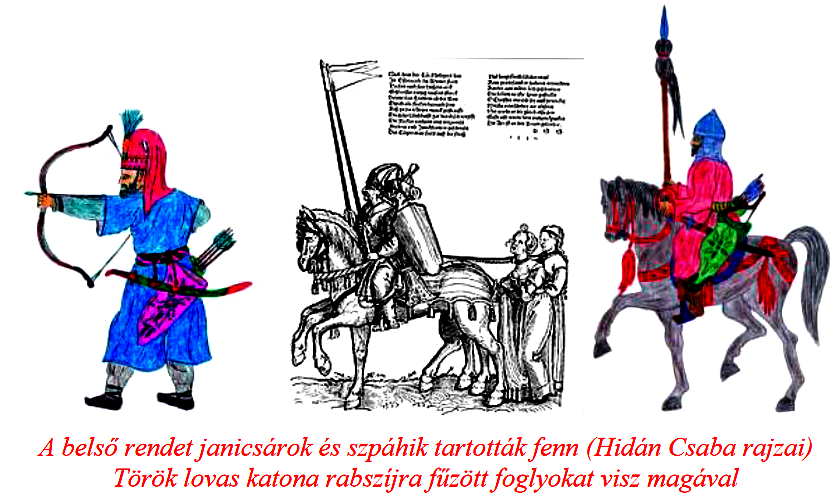 The most well-known, perhaps because it performed the most tasks, was the bathtub . Originally, he was the judge , but if necessary, he had to ensure the deployment of the army, the collection of taxes, the supervision of religious, industrial and agricultural bodies, and the smooth operation of legal and notary duties. The middle-level administrative tasks were also based on the work of the caddy. In addition to his income from Istanbul, the kadi took his share of the fines and fines. It is well known that the life and wealth acquisition of the leading stratum of the empire was based on corruption, taking into account their own interests.
The most well-known, perhaps because it performed the most tasks, was the bathtub . Originally, he was the judge , but if necessary, he had to ensure the deployment of the army, the collection of taxes, the supervision of religious, industrial and agricultural bodies, and the smooth operation of legal and notary duties. The middle-level administrative tasks were also based on the work of the caddy. In addition to his income from Istanbul, the kadi took his share of the fines and fines. It is well known that the life and wealth acquisition of the leading stratum of the empire was based on corruption, taking into account their own interests.
 The tub was just one of the actors in the well-constructed imperial machine. Power was exercised by the defterdar (tax collector) and the mufti (knower of secular and ecclesiastical laws) played a major role It should be noted, however, that the qadi made his judgments and decrees not shari'a (religious law), but on the basis of the khans (laws of the sultan). The operation of the Ottoman imperial machinery was ensured by the best-trained military, the army of foot janissaries and cavalry spahs . In today's sense, they also performed the duties of the police.
The tub was just one of the actors in the well-constructed imperial machine. Power was exercised by the defterdar (tax collector) and the mufti (knower of secular and ecclesiastical laws) played a major role It should be noted, however, that the qadi made his judgments and decrees not shari'a (religious law), but on the basis of the khans (laws of the sultan). The operation of the Ottoman imperial machinery was ensured by the best-trained military, the army of foot janissaries and cavalry spahs . In today's sense, they also performed the duties of the police.
Destruction of the Hungarian population
It must be emphasized that the population of the Carpathian Basin - among whom many nationalities lived - did not perish in a similar proportion. In the Highlands, among the mountains, the herding Totos were less affected by the Turkish attacks. A similar lucky fate befell the peoples of Transcarpathia. the Transylvanian Oláhs also found greater safety in the mountains. Moldavia and Havasalföld had already been vassal states of the Porte, so they also lived in greater security than the Hungarians. We have already talked the Rács The Croats received similar attacks to the Hungarians, considering that the Turkish war roads leading to the west also passed through the areas between the Dráva and Sava rivers. (Think about the fight of the people of Zrín against the Ottoman armies.) The Turks reached the territory of Austria many times, if they got through the Hungarian and Croatian defense bastions. However, we cannot talk about the destruction of the population here. The city-dwelling Saxons (shoes) and Transylvanian Saxons defended their castle walls and paid taxes for their safety.
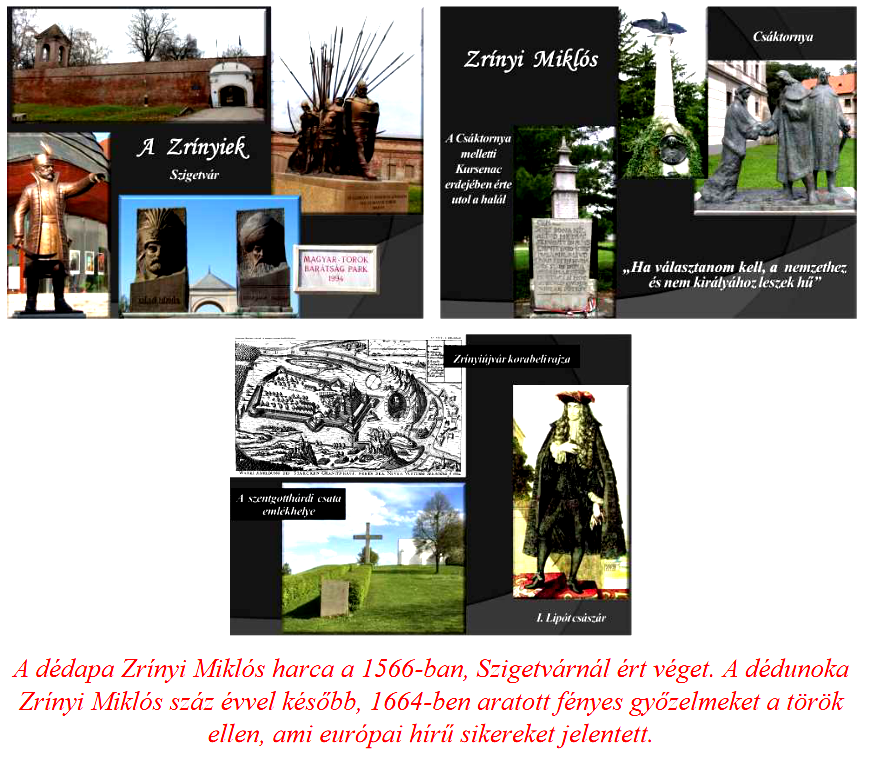
 In the 16th century, the population of the territory of the Kingdom of Hungary at 3.5 million . 1.8 million people lived in royal Hungary 800 thousand in Transylvania 900 thousand in the Subjugation 4 million people lived in the Carpathian basin.) The question arises as to where the significant destruction of the Hungarian people could be seen at that time ? There is no exact data on the large number of slaves taken away, nor on the genocide that took place over the course of a century and a half. Because hundreds of Hungarian villages and towns have disappeared, primarily in the Great Plains, it is a fact. As a result of the natural increase of the population, without the Turkish campaigns, the population of Hungary should have been much larger. In the previously mentioned ethnic families, the children could be born in accordance with the peaceful conditions. Although large-scale resettlements directed from Vienna only began at the beginning of the 18th century, infiltrations already increased the number of nationals in previous centuries. The 70-80 thousand Turkish invaders did not constitute a significant population. But the Ráks (Serbs) and the Bosnians who came with them settled en masse along the Danube and between the Danube and the Tisza, but they still did not replace the large number of Hungarians who disappeared from there.
In the 16th century, the population of the territory of the Kingdom of Hungary at 3.5 million . 1.8 million people lived in royal Hungary 800 thousand in Transylvania 900 thousand in the Subjugation 4 million people lived in the Carpathian basin.) The question arises as to where the significant destruction of the Hungarian people could be seen at that time ? There is no exact data on the large number of slaves taken away, nor on the genocide that took place over the course of a century and a half. Because hundreds of Hungarian villages and towns have disappeared, primarily in the Great Plains, it is a fact. As a result of the natural increase of the population, without the Turkish campaigns, the population of Hungary should have been much larger. In the previously mentioned ethnic families, the children could be born in accordance with the peaceful conditions. Although large-scale resettlements directed from Vienna only began at the beginning of the 18th century, infiltrations already increased the number of nationals in previous centuries. The 70-80 thousand Turkish invaders did not constitute a significant population. But the Ráks (Serbs) and the Bosnians who came with them settled en masse along the Danube and between the Danube and the Tisza, but they still did not replace the large number of Hungarians who disappeared from there.
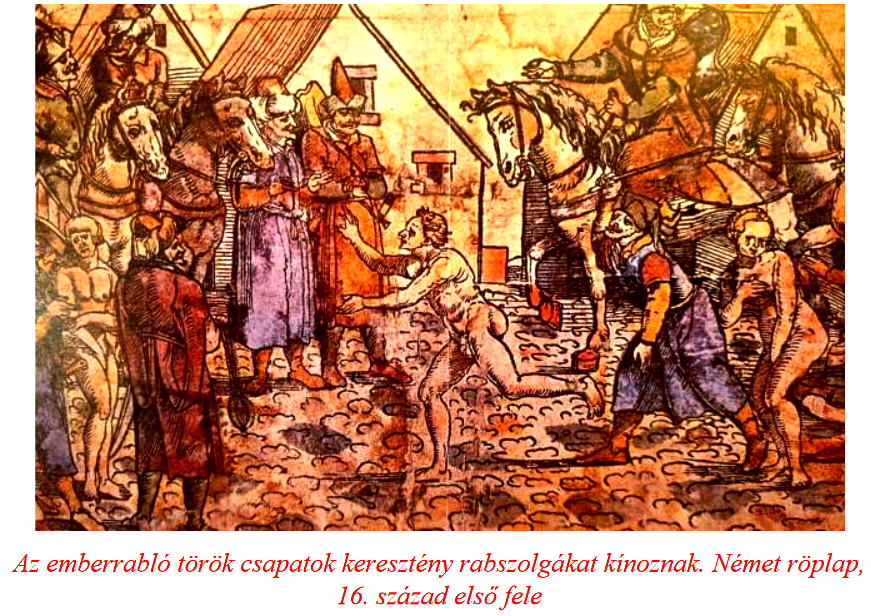 It should be noted that in these years, when the population density of the states of the West 50-100 people/km2 (France, Italy),
It should be noted that in these years, when the population density of the states of the West 50-100 people/km2 (France, Italy),
the population density in the area of was 7-8 people/km2 , and in the more protected Western Hungary it was only 15 people /km2 was the number of inhabitants. We bled for Europe, and not for the first time and not for the last time. We got Trianon for it as a reward.
In addition to the Turkish devastation, the population decline was also caused by internal problems.
There was a disturbance in agricultural production, since there were no longer enough workers (they died, fled, were taken) to cultivate the fields. In addition to famine, the spreading swamp and fen world resulted in a series of diseases (typhoid, malaria, plague, pneumonic plague). In addition to the Turks, the imperial armies from the west tormented the country, moreover, in these years, religious antagonisms erupted, which caused a series of religious wars. (It should be noted that although Hungary and its allies protected the western territories of Europe, they exterminated themselves during the religious wars. The Turks watched with satisfaction the self-destructive European peoples fighting each other. The French Huguenot War, the religious wars in Germany, the Thirty Years' War cost millions of lives . It is not by chance that this carnage of the 16th and 17th centuries is called Europe's first "world war".)
Relationships between land ownership and the tax system
In the Subjugation, all land and all people and animals living on it, as well as real estate, were considered the property of the sultan. A part of the estate – this varied from one sanjak to another – increased the income of the sultan's treasury. This was the estate . The other part is the so-called service estate , which was given to lower-ranking officials and military leaders. A major disadvantage of the latter was that the beneficiary could be transferred from there at any time to another part of the empire, which entailed the loss of the benefits accumulated until then. This resulted in predatory farming on service estates. (That is, to get as much money as possible in the shortest possible time.)
 Hódoltság - especially in the Great Plain - the most important source of income came from agricultural work. Who paid taxes in the territories ruled by the Turks? Of course, he remained a peasant . Most of the Hungarian nobility fled their estates to save their lives. Let's note that the nobleman's men sometimes appeared in the border areas, and they also collected the tax. After 1541, the first task of the pasha and the beys was to enumerate the population of the villages. In this way, the tax could be collected "by name". This was the double taxation .
Hódoltság - especially in the Great Plain - the most important source of income came from agricultural work. Who paid taxes in the territories ruled by the Turks? Of course, he remained a peasant . Most of the Hungarian nobility fled their estates to save their lives. Let's note that the nobleman's men sometimes appeared in the border areas, and they also collected the tax. After 1541, the first task of the pasha and the beys was to enumerate the population of the villages. In this way, the tax could be collected "by name". This was the double taxation .
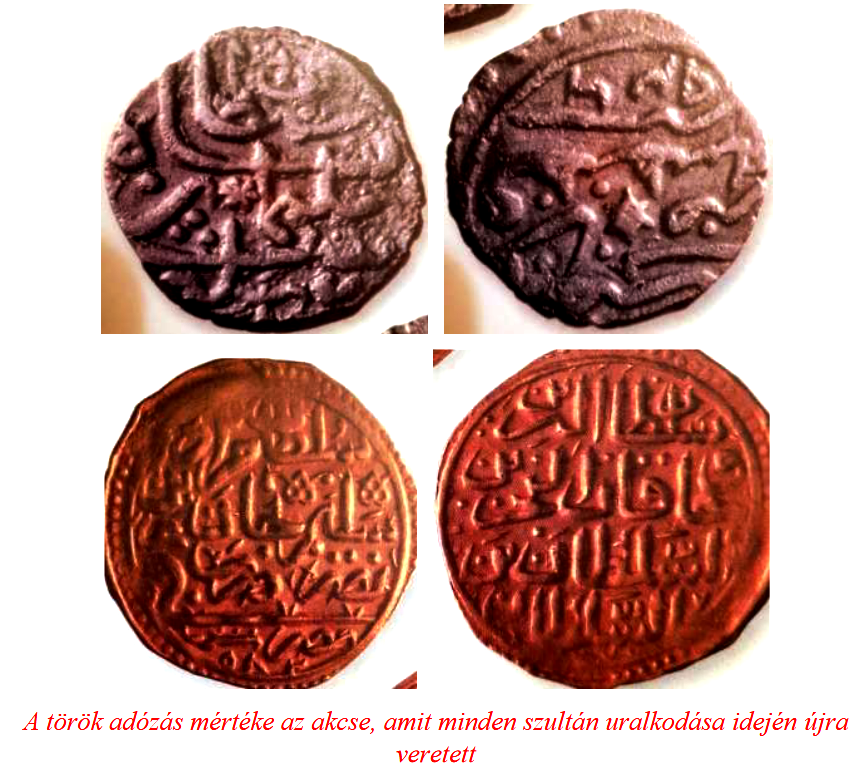
The people of the church - especially the Roman Catholics - also fled from the subject areas, as the soldiers of Islam saw them as the greatest enemy. It should be noted that the Turks rather spared the Reformed churches and their priests in many places, concluded contracts with them, and even provided them with favorable conditions in a surprising way. (In Kecskemét, for example, it is true that this already happened in 1678, the faithful could build a new church. However, the Sultan's permission was honored with a lot of gold by the city's residents.)
 Why did you differentiate between Turkish religion and religion? Perhaps because with this they were able to incite Christians and followers of the Christian religion against each other . It does not hurt to know that the vast majority of the population of the Principality of Transylvania, which was dependent on taxpayers, and the princes themselves - with the exception of István Báthori - followed one of the Protestant religions. Perhaps because the walls and other decorations of the Reformed churches prohibited the depiction of people and the veneration of saints. The Turks systematically knocked off the heads of the statues in the Catholic churches, and removed the depictions of the altar and wall paintings. Perhaps because they wanted to forget the past and history of Szent István's country with this destruction. Then it is also possible that the Hungarian Roman Catholic Church was the biggest obstacle on the way to the final victory against the Catholic Habsburgs. However, let's add that the Turks - although they also caused enormous destruction and devastation in church artefacts - did not force the population to adopt the Mohammedan religion. Despite this, whoever converted to the Mohammedan faith (renegade) was rejected by the Christians and had to take the name "Servant of Allah" (Abdullah). Moreover, the sons of the renegades had to bear the Muslim name of their father.
Why did you differentiate between Turkish religion and religion? Perhaps because with this they were able to incite Christians and followers of the Christian religion against each other . It does not hurt to know that the vast majority of the population of the Principality of Transylvania, which was dependent on taxpayers, and the princes themselves - with the exception of István Báthori - followed one of the Protestant religions. Perhaps because the walls and other decorations of the Reformed churches prohibited the depiction of people and the veneration of saints. The Turks systematically knocked off the heads of the statues in the Catholic churches, and removed the depictions of the altar and wall paintings. Perhaps because they wanted to forget the past and history of Szent István's country with this destruction. Then it is also possible that the Hungarian Roman Catholic Church was the biggest obstacle on the way to the final victory against the Catholic Habsburgs. However, let's add that the Turks - although they also caused enormous destruction and devastation in church artefacts - did not force the population to adopt the Mohammedan religion. Despite this, whoever converted to the Mohammedan faith (renegade) was rejected by the Christians and had to take the name "Servant of Allah" (Abdullah). Moreover, the sons of the renegades had to bear the Muslim name of their father.
One of the special and cruelest forms of taxation for Hungarian families was child taxation Raiding Turkish troops regularly appeared in Hungarian villages. They rounded up the strong boys, separated them from their families for good, and took them to the institutes where they were trained as janissaries, the best soldiers of the Turkish army.
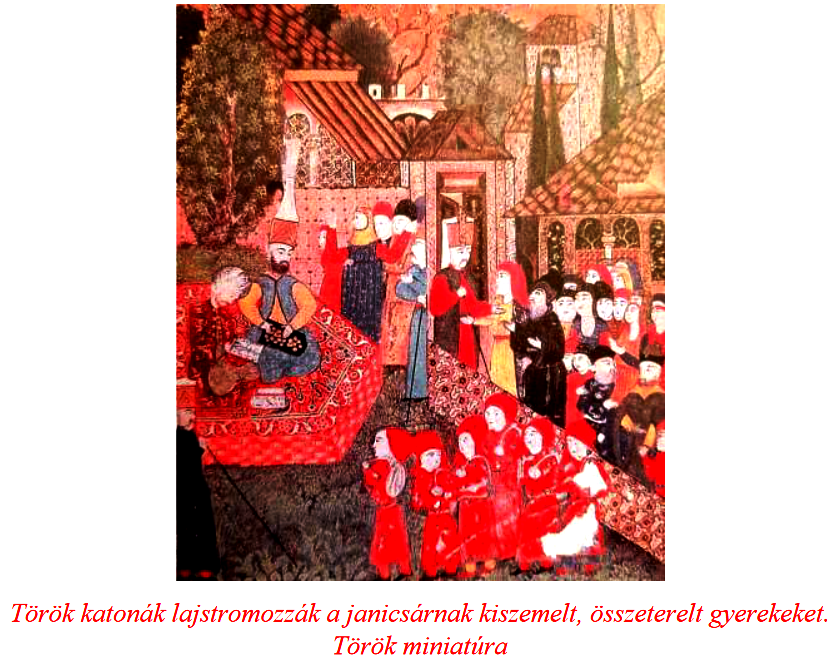 In the central areas of the subjugation, between the Alföld and the Danube-Tisza, thanks to the rivers that were still unregulated at the time, there were huge flood plains where grain cultivation could not continue. However, fishing and animal husbandry brought significant benefits. It was from these regions that the herds of gray cattle, numbering in the tens of thousands, were driven to the western markets by the brave and good gun-wielding cattle herders, the Hajdús. A significant part of agricultural production took place in the areas south of the Highlands. During these years, significant forest areas were cleared, which further increased the unregulated water area. Even before the Turkish invasion, the most important wine-growing region, Szeremség, was depopulated and destroyed. Its place in the northern parts was replaced at the end of the 16th century by the wine-growing region of Tokaj, which still plays a leading role in grape growing.
In the central areas of the subjugation, between the Alföld and the Danube-Tisza, thanks to the rivers that were still unregulated at the time, there were huge flood plains where grain cultivation could not continue. However, fishing and animal husbandry brought significant benefits. It was from these regions that the herds of gray cattle, numbering in the tens of thousands, were driven to the western markets by the brave and good gun-wielding cattle herders, the Hajdús. A significant part of agricultural production took place in the areas south of the Highlands. During these years, significant forest areas were cleared, which further increased the unregulated water area. Even before the Turkish invasion, the most important wine-growing region, Szeremség, was depopulated and destroyed. Its place in the northern parts was replaced at the end of the 16th century by the wine-growing region of Tokaj, which still plays a leading role in grape growing.
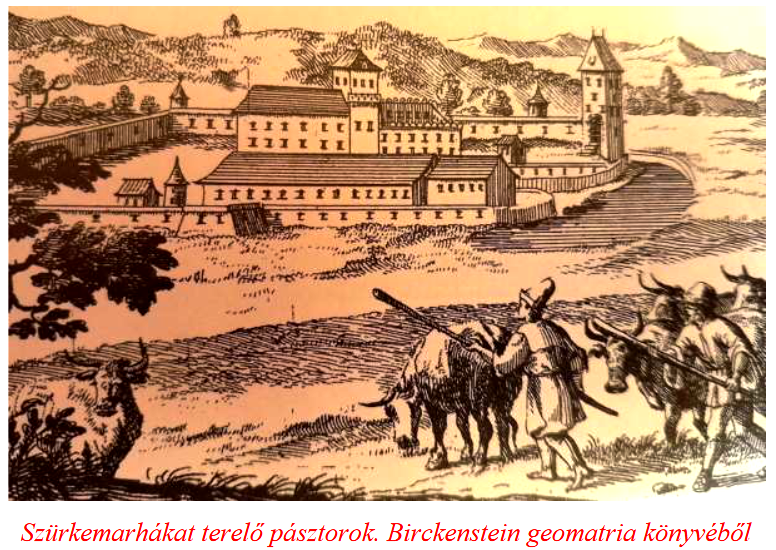
Most of the villages and towns in the plains were surrounded by water, which was a disadvantage on the one hand, as it hindered the development of farmland, or the crops of the land that were already about to be harvested were flooded by the flood. On the other hand, it represented protection for the population, since the enemy could not even approach the settlement in the swampy, marshy region.

Turkish culture in Hungary
culture of a people can be seen in its language, art, eating habits, architecture, city and landscape shaping activities.
the Turkish empire and the conquered territories, all aspects of life were subordinated to Islam. (This hasn't changed much even today.) Education and training in madrasahs , which meant a well-structured school system.
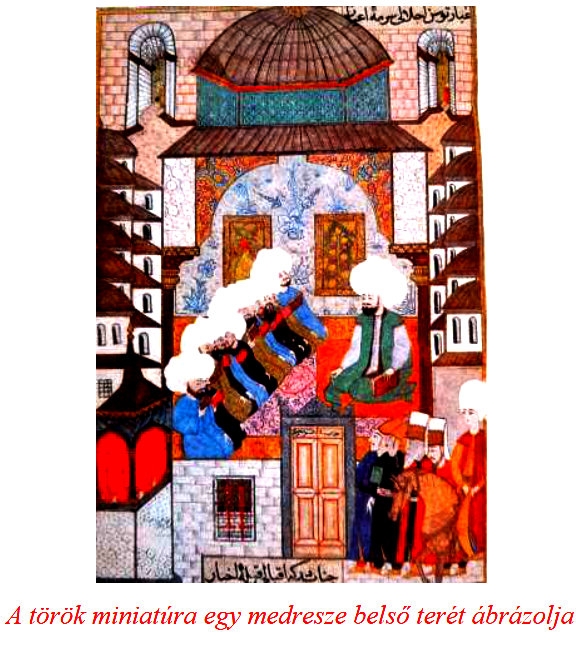 no coincidence that the main goal of the Turkish campaigns was the capture of the two ancient centers, Esztergom and Székesfehérvár . They also knew, like the leaders of any conquering empire, that a people can only be defeated most effectively if they lose their culture, customs, and uproot their ancient roots.
no coincidence that the main goal of the Turkish campaigns was the capture of the two ancient centers, Esztergom and Székesfehérvár . They also knew, like the leaders of any conquering empire, that a people can only be defeated most effectively if they lose their culture, customs, and uproot their ancient roots.

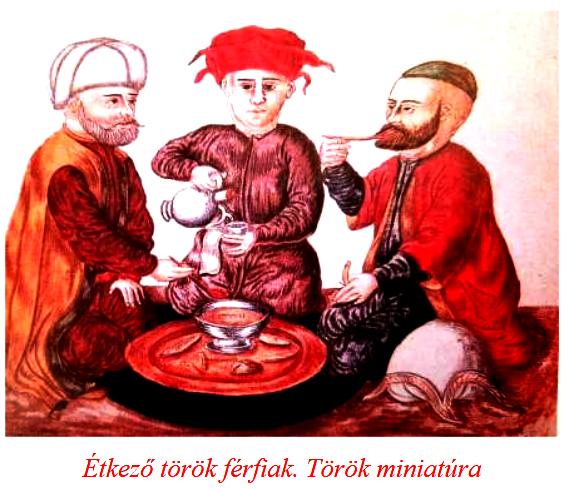 Settlements in the area of Hódoltság
Settlements in the area of Hódoltság
The century and a half Turkish invasion did not only change the composition and number of the population. Villages, towns, market towns and castles also underwent significant changes. The villages consisted of 20-30 houses, and if we count an average of five children in each family, each settlement had 140-150 inhabitants. The serfs fled en masse to a more protected and safer place. During these decades, Tokaj and its surroundings became one of the most densely populated areas in the country, where winemaking became nationally and European famous.
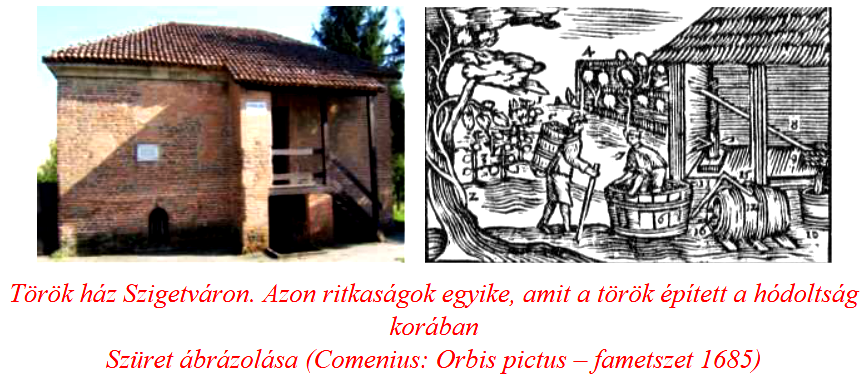
In contrast to the mining, trading and industrial settlements in the highlands, Transylvania, and Transdanubia, a network of market towns developed in the lowlands.
the cities that had a significant number of people and an industrial background (Buda, Fehérvár, Timisoara, Esztergom, Pécs, Szeged, Kanizsa, Eszék) came to a halt under Turkish rule, and the urban "infrastructure" that had developed until then was destroyed. Western relations ceased, the German citizenry fled. The invading Turks did not build, at most they converted churches into mosques, stone buildings into barracks, and strengthened city walls against Hungarian attacks. The only thing they brought with them was the spa culture, of which some of our cities, especially Buda, are still good examples.
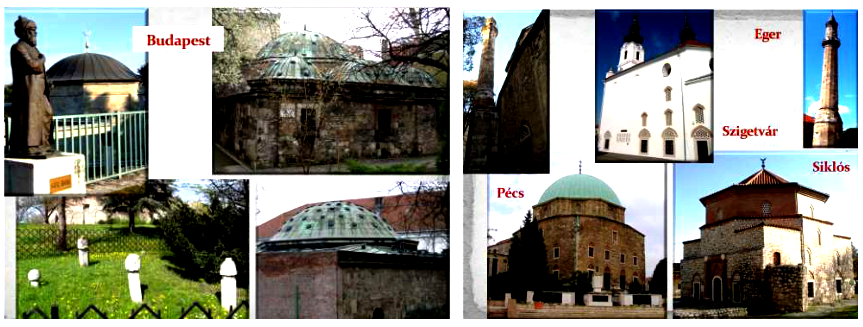
The lowland areas provided a good opportunity for the market towns , in which agricultural production had the main role.
Both large animal husbandry, primarily cattle husbandry, and crop cultivation were managed by prominent, wealthy families from the peasant ranks. Some of the cattle traders (stockmen) acquired wealth and rank, such as Sebestyén Thököly, whose great-grandson Imre Thököly already held the princely title of Transylvania and the Highlands.
Among the market towns, three vassal towns took a leading role: Nagykőrös, Kecskemét, Cegléd. It is important to emphasize that in the conquered settlements - this was a prerequisite for the self-interest of the Turks, the influence of significant taxes, peasant work and food production - the conquerors left the functioning of the local governments almost intact before the occupation. Let's note that quite a few of the market towns outside the vassalage, such as Debrecen, have already surpassed many royal cities in terms of economy, culture and organization. Gray cattle - they were driven to the German cities on foot - and animal skins were the prized commodities of trade. The subject Hungarians enjoyed an advantage, because the peoples of the Balkans, Greeks, Jews, and Muslims were not allowed into royal Hungary. The situation changed only in 1615, when the first Turkish-Habsburg trade agreement was concluded. After that, however, Albanians, Greeks, Dalmatians, Bulgarians, Armenians, Serbs, and Jews, blessed with excellent business sense, reaped a significant portion of the profits. What had so far been effective in the Subjugation was also turned against Hungarian interests.
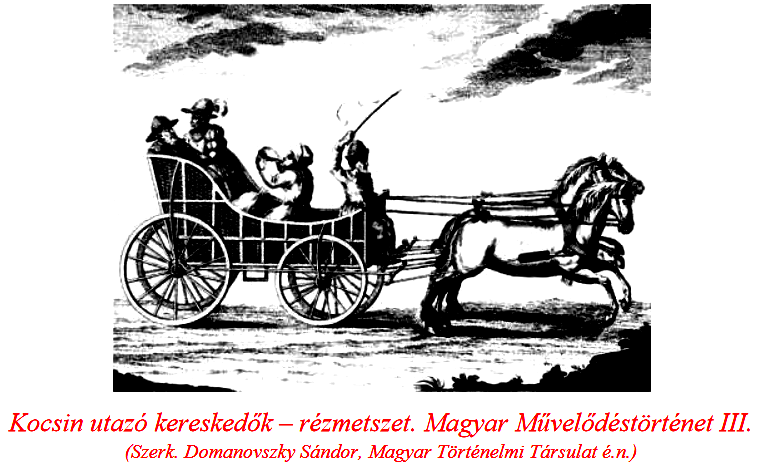

Hungarian-Turkish relations today
I have written about it several times in previously published books (for example Hungary Betrayed a Hundred Times , The Three Trianons ), I have told it in accessible videos (You Tube), and you can even follow it in the 5 minute history ... series - which of course many others have done and are doing more and more often – so that Turkish-Hungarian friendship and Turkish-Hungarian kinship are not confused.
For me, this can be seen most spectacularly in action in Szigetvár, in the Hungarian-Turkish Memorial Park. Because from Eger, through Buda, to Pécs, many memorials proclaim the Turks' presence here for a century and a half, but none of them raise perhaps the greatest destroyer and pest of Hungarian history, the Hungarian people (Szulejmán Nagy) next to Miklós Zrínyi, who died a heroic death. This cannot be substantiated even by the fact that the greatest ruler of the Ottoman Empire breathed his last at the siege of Szigetvár, and that the small village named Sulimán, north of Szigetvár, preserves the memory of the sultan.

Don't let us, late descendants, be fooled by the fact that Turkey - among others - took in Ilona Zrínyi, Ferenc Rákóczi and Lajos Kossuth, who were forced to flee. All of these are worthy and noble gestures, but the price is too high. Mainly in Trianon. Because without the devastation of the Ottoman wars, the border changes that occurred at the beginning of the 20th century to the detriment of Hungary - we can be sure - would not have been of such tragic proportions. It is a tragicomedy of history that in connection with the events between 1918-1922, we used to mention the positive example of Kemal Atatürk, and compare it to the duo of Mihály Károlyi and Béla Linder, who lost the country. Turkey, although it was also among the losing parties, did not accept many of the points of the peaces around Paris, a decision that was disadvantageous to them.
They fought, and this fighting spirit lives on in the Turkish leadership and the Turkish people to this day. (However, let's not forget the Kurdish genocide and the fact that Turkish nationalism is currently in a chaotic state at the beginning of the 21st century.) Let us, however, stick to the discussion of Hungarian-Turkish relations in a historical perspective. In order to approach the root of the topic more deeply, I call on Tibor Rohla's insightful analysis. He rightly starts from the fact that Erdogan's country still pan-Turkist nationalism when discussing Turkish history. (I note here that the endless TV series called Sülejmán - which can be called more like a soap opera - also serves this purpose. And Hungarian TV - TV? - rather anti-national images and words feed this into the heads of Hungarian youth. In such cases, I always play with the idea , how could this happen the other way around? The answer was no! It is just an addition that the Hungarian translation of the mentioned Sülejmán theme in several volumes is among the "successful" books in the largest Hungarian bookstore network.)
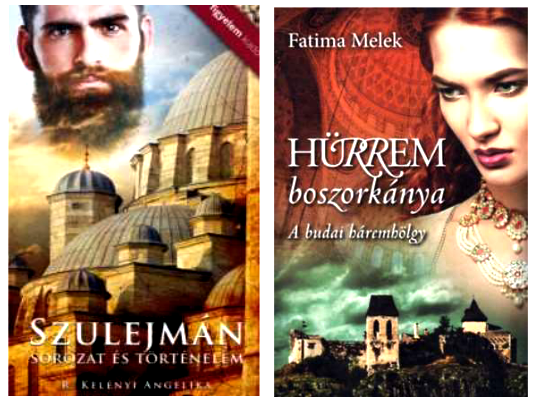
Hungarians like the fact that every second Turkish man's name is Atilla . They just don't know that the Turks consider the Huns and Attila exclusively as their ancestors, and they do not tolerate contradiction. The Hungarians – along with many other peoples – are considered a simple offshoot. However, they do not know what to do with the question, why is our people known to the wider world as Hungary ? They went so far in falsifying history that the Turkish author quoted details from the film Attila and uploaded them to the Internet under the name Hun Türkei In the mind of the Turks, Atilla is nothing more than a "Hunter Turk", the great leader of a people with a consciousness that never existed.
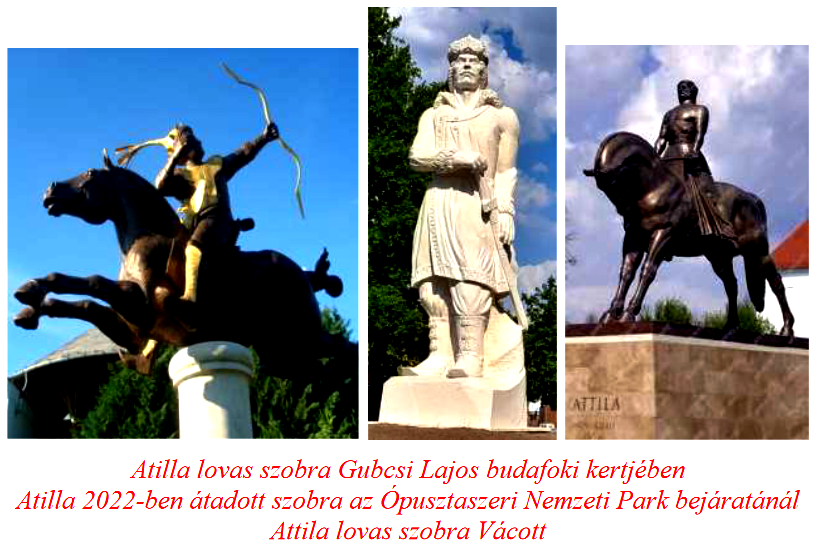
It is essential to clarify that the Turk and Turkish are not one and the same. The ancient Turks were not of the Islamic religion, but then they became Islamized over time. The name of the Turk /türk/ people would be properly "Turkic", but similar terminology gives nationalist Turkish historians and politicians an excellent opportunity to conflate the two. The essence of this is that the Turks of today call themselves the unadulterated, direct descendants of the ancient Turkic peoples. They carry this idea further, and as a result teach that all the great peoples of the world can be derived from them. Unfortunately, the website of the Kurultáj also had the title of the website translated into English as Hun-Turkic nations . Which, as we know, doesn't exist. The 27 related nations (nationalities) came to the Kurultaj from twenty countries. If we look at the flags, we rarely find one without the crescent moon. An ambivalent situation when the past tells the present. We are the only EU member state that, since 2015, has not officially allowed in the so-called migrants who come from who knows where and with what intentions, mostly of the Islamic religion. At the same time, we are the only country in Europe that is accepted and embraced by the peoples of the East, guided by their ancient consciousness and historical knowledge. This is perhaps not a bad message for the future.

The Turks make great efforts to accept the Huns as Turks. So far, international science has not been willing to do this, but who knows what the Islamic masses pouring into Europe will force the scientists to do? After all, we have seen this before, nearly two and a half centuries ago. Only then did the Indo-Europeans impose on us, the Hungarians, that we are relatives of the Finno-Ugric people and that we speak this language,
Let neither history nor politics deceive us. In the eyes of Islam, we will always be unbelievers, just as we were five hundred years ago, and given the current situation, we will increasingly be so again. Turkish friendship will only last until we openly confront Muhammad's teachings. Because the Turk, if he has to choose between his god and his "Hungarian friend", will choose the former without thinking.
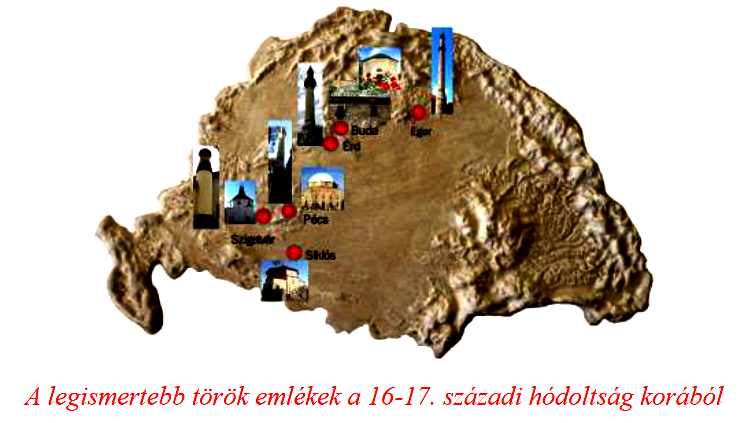 Author: Ferenc Bánhegyi
Author: Ferenc Bánhegyi
(Header image: Wikimedia Commons )
The parts of the series published so far can be read here: 1., 2., 3., 4., 5., 6., 7., 8., 9., 10., 11., 12., 13., 14., 15., 16., 17., 18., 19., 20., 21., 22., 23., 24,, 25., 26., 27., 28., 29/1., 29/2., 30., 31., 32., 33., 34., 35., 36., 37., 38., 39., 40., 41.

